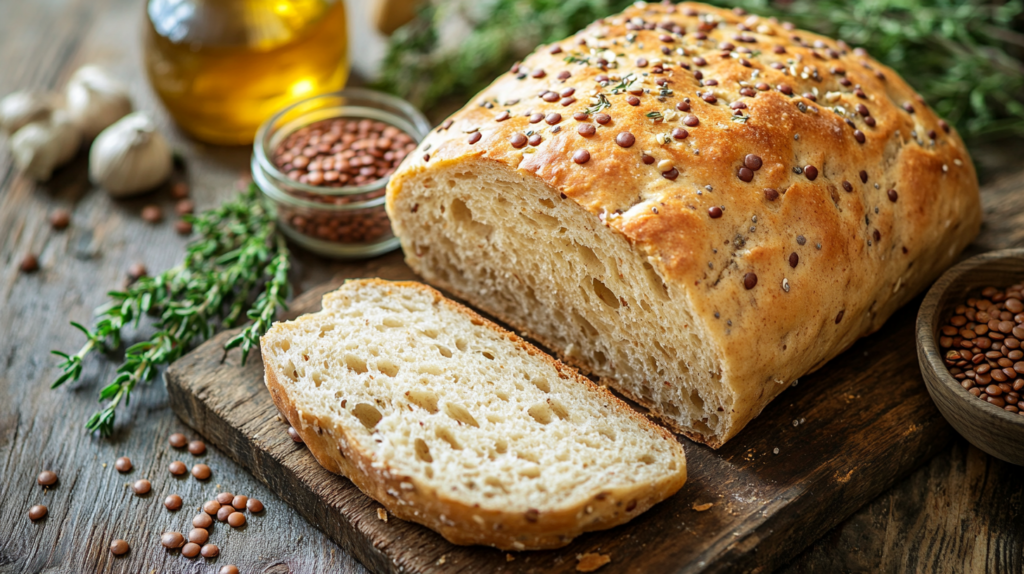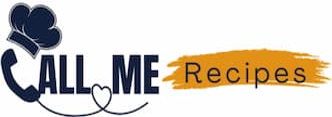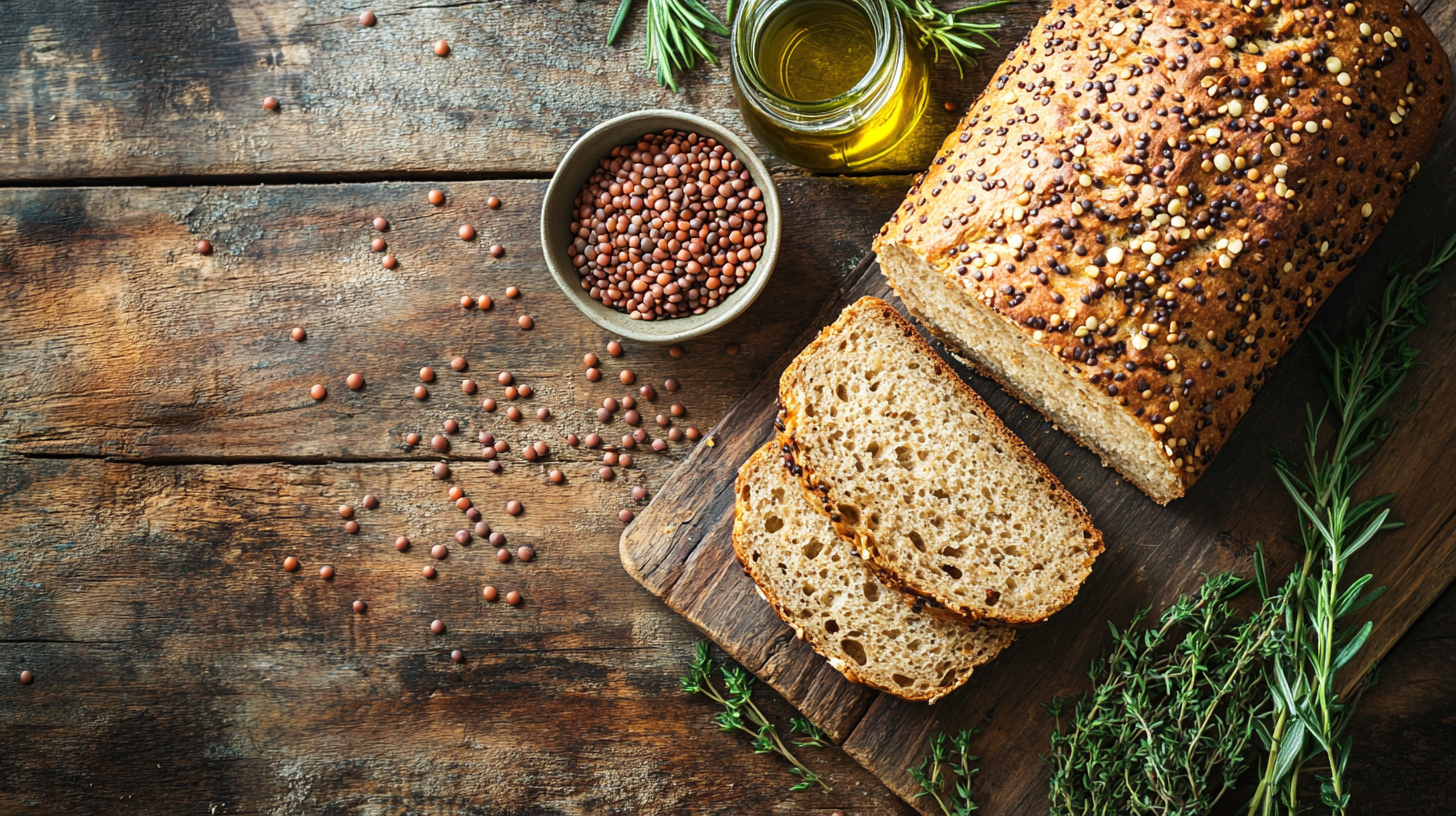When you think of bread, lentils might not be the first ingredient that comes to mind. But trust me, lentil bread is a game-changer! Packed with nutrients, it’s the perfect blend of health and flavor. Whether you’re looking for a gluten-free option, a high-protein boost, or simply a delicious twist on traditional bread, this lentil bread recipe has you covered.
Why Choose Lentil Bread?
Lentil bread is more than just a creative recipe—it’s a powerhouse of nutrition and sustainability. Let’s explore why it deserves a spot on your table.
The Nutritional Benefits of Lentils
Lentils are tiny but mighty when it comes to health benefits:
- Protein-Packed: They’re an excellent source of plant-based protein, making this bread ideal for vegans and vegetarians.
- Rich in Fiber: Lentils support healthy digestion and help keep you full longer.
- Loaded with Nutrients: Iron, magnesium, and B vitamins are just a few of the many goodies packed in these legumes.
“Eating lentil bread is like giving your body a delicious hug filled with nutrients!” 🌱🍞
How Lentil Bread Supports a Healthy Diet
Unlike traditional bread, which can be high in refined carbs, lentil bread provides slow-digesting carbohydrates. This helps maintain stable blood sugar levels and keeps your energy steady throughout the day. Plus, it’s naturally lower in fat!
Environmental Benefits of Using Lentils in Baking
Lentils are one of the most sustainable crops to grow. They require minimal water and have a low carbon footprint. Choosing lentil bread isn’t just good for your health—it’s a small step toward helping the planet.
Essential Ingredients for Lentil Bread
The success of lentil bread lies in using the right ingredients. Here’s what you’ll need to make a loaf that’s flavorful, nutritious, and satisfying.
Types of Lentils to Use for Bread
Not all lentils are created equal when it comes to baking:
- Red Lentils: They cook quickly and have a mild flavor, making them perfect for bread.
- Green Lentils: These add a nutty taste and firmer texture.
- Brown Lentils: A versatile option, though they take slightly longer to cook.
Pro Tip: Pre-cook and mash the lentils to create a smooth base for your dough.
Flours and Binders for Perfect Texture
Since lentil bread often skips traditional wheat flour, here are some alternatives:
- Almond Flour: Adds moisture and a nutty flavor.
- Oat Flour: Keeps the bread light and fluffy.
- Tapioca Flour: Works as a great gluten-free binder.
Flaxseed meal or chia seeds mixed with water act as natural binders to hold everything together.
Additional Flavor Enhancers and Spices
To make your lentil bread stand out, consider these additions:
- Garlic powder, cumin, or smoked paprika for savory notes.
- A drizzle of olive oil for richness.
- Fresh herbs like rosemary or thyme for a fragrant touch.
“The beauty of lentil bread lies in its versatility—customize it to suit your palate!” 🌿✨

Tools You’ll Need to Make Lentil Bread
Having the right tools on hand can make your bread-making experience smooth and stress-free.
Kitchen Equipment for Successful Baking
- A high-powered blender or food processor to puree the lentils.
- Mixing bowls for combining ingredients.
- A sturdy loaf pan for shaping and baking the bread.
Alternatives for Traditional Bread Pans
If you don’t have a loaf pan, no worries!
- Use a round cake tin for a rustic, artisan-style bread.
- Divide the dough into smaller portions and use a muffin tin for lentil bread rolls.
Tips for Preparing Your Baking Space
Before starting, clear your workspace and preheat your oven. Grease your loaf pan or line it with parchment paper to prevent sticking. Organization is key to a stress-free baking session.
Step-by-Step Guide to Making Lentil Bread
Now that you’re armed with all the essentials, let’s dive into the recipe. Follow these steps for a loaf that’s soft, flavorful, and downright delicious.
Soaking and Preparing Lentils
- Rinse 1 cup of lentils thoroughly under running water to remove dirt and debris.
- Soak the lentils in water for 4–6 hours or overnight. This helps soften them for easier blending.
- Drain and transfer the lentils to a blender or food processor. Add a splash of water and blend until smooth.
Mixing the Dough: Techniques and Tips
- In a mixing bowl, combine your lentil puree with the following:
- 1 cup of almond or oat flour.
- 1 tablespoon of flaxseed meal mixed with 3 tablespoons of water.
- 1 teaspoon of baking powder for leavening.
- A pinch of salt and any desired spices or herbs.
- Mix until a thick, sticky dough forms. If it’s too dry, add a tablespoon of water at a time.
Baking and Cooling Your Lentil Bread
- Transfer the dough to your prepared loaf pan and smooth the top with a spatula.
- Bake in a preheated oven at 375°F (190°C) for 40–50 minutes or until the crust is golden brown.
- Let the bread cool in the pan for 10 minutes before transferring it to a wire rack. Cool completely before slicing to ensure clean cuts.
“Patience is the secret ingredient to perfect lentil bread—let it cool for the best texture.” 🍞⏳

Common Problems and Solutions in Lentil Bread Baking
Even the most seasoned bakers run into challenges. Lentil bread, with its unique ingredients, can be tricky, but don’t worry—we’ve got solutions for the most common problems you might face.
Why Is My Lentil Bread Too Dense?
A dense loaf can feel more like a brick than bread. Here’s what might be causing the issue:
- Insufficient Leavening: Baking powder or soda helps the bread rise. Make sure your leavening agents are fresh and measured accurately.
- Overmixing: Too much mixing can eliminate the air pockets that give bread its fluffiness. Mix just until combined.
- Incorrect Flour Ratios: Using too much flour can weigh down the dough. Stick to the recipe and measure your ingredients carefully.
“Remember, baking is as much a science as it is an art—precision is your best friend.” 🎨🧪
How to Fix Crumbly or Dry Lentil Bread
Crumbly bread can ruin a perfectly good loaf. Here’s how to fix it:
- Add More Moisture: Ingredients like olive oil, mashed avocado, or applesauce can increase moisture levels.
- Use Binders: Flaxseed or chia eggs (1 tablespoon of seed + 3 tablespoons water) can help hold the bread together.
- Check Your Bake Time: Overbaking dries out the bread. Keep an eye on it and use a toothpick to check for doneness.
Preventing Overbrowning or Undercooking
It’s frustrating when the crust browns too quickly while the center remains undercooked.
- Lower the Oven Temperature: If your crust is browning too fast, reduce the temperature by 10–15 degrees Fahrenheit and bake longer.
- Cover with Foil: Tent the loaf with aluminum foil halfway through baking to protect the crust while the inside finishes cooking.
- Use the Right Pan: Dark metal pans absorb more heat, so consider using a light-colored or glass pan for even baking.
Tips for Perfect Lentil Bread Every Time
Mastering lentil bread requires attention to detail and a few pro tips. These tricks will help you achieve a loaf that’s soft, flavorful, and picture-perfect every time.
How to Achieve a Soft and Fluffy Texture
- Don’t Overpack the Dough: Resist the urge to press the dough too tightly into the pan. A lighter touch allows for better air circulation.
- Incorporate Steam: Place a small dish of water in the oven while baking. The steam creates a soft crust and helps the bread rise.
- Choose the Right Flour Blend: Combining oat or almond flour with tapioca or rice flour can create a balance between softness and structure.
Adding Seeds, Nuts, and Herbs for Extra Flavor
Lentil bread is the perfect canvas for creative additions. Here are some ideas:
- Seeds: Chia, sesame, or sunflower seeds add crunch and nutrition.
- Nuts: Walnuts or pecans bring richness and texture.
- Herbs: Fresh rosemary, thyme, or dill elevate the flavor profile, making the bread ideal for savory dishes.
“Every loaf of bread is a blank canvas—let your imagination and pantry inspire you.” 🖌️🍞
Storing and Freezing Lentil Bread Properly
To keep your lentil bread fresh and delicious:
- At Room Temperature: Wrap the loaf in a clean kitchen towel or place it in an airtight container. It will stay fresh for 2–3 days.
- Refrigeration: Store in the fridge for up to a week, but warm slices before serving to restore softness.
- Freezing: Slice the bread and wrap each slice in plastic wrap. Place the slices in a freezer bag, and freeze for up to 3 months. Thaw at room temperature or toast directly from frozen.
Creative Variations for Lentil Bread Recipes
Lentil bread is a versatile base for experimenting with new flavors and textures. Try these fun variations to keep things interesting.
Gluten-Free Lentil Bread
For those avoiding gluten, lentil bread is a fantastic option. Use a gluten-free flour blend that includes xanthan gum for binding, or combine chickpea flour with tapioca flour for a naturally gluten-free loaf.
High-Protein Lentil Bread with Seeds and Nuts
Amp up the protein by mixing in nutrient-dense ingredients:
- Add ¼ cup of pumpkin seeds, sunflower seeds, or chia seeds.
- Toss in chopped almonds, walnuts, or cashews for extra crunch.
This variation is perfect for breakfast or post-workout snacks.
Sweet Lentil Bread with Raisins and Cinnamon
Transform your lentil bread into a sweet treat:
- Mix in ½ cup of raisins or dried cranberries for bursts of sweetness.
- Add 1 teaspoon of cinnamon or nutmeg for warm, comforting flavors.
- Drizzle a light glaze of powdered sugar and lemon juice for a dessert-style loaf.
“Whether you’re craving something savory or sweet, lentil bread adapts to every mood and occasion.” 🌟🍌
Benefits of Baking Lentil Bread at Home
Baking lentil bread at home isn’t just about enjoying a fresh loaf—it’s about reaping the many benefits that come with it. From health advantages to creative control, there’s so much to love about this process.
Controlling Ingredients for Allergies and Preferences
When you bake at home, you’re in charge of every ingredient:
- Allergy-Friendly: Skip allergens like gluten, dairy, or eggs by customizing the recipe.
- Health-Conscious Choices: Use natural sweeteners, whole grains, and fresh lentils for a nutritious loaf.
- Flavor Customization: Want a savory herb loaf or a slightly sweet cinnamon version? The choice is yours.
Supporting a Sustainable Lifestyle
Lentils are one of the most environmentally friendly crops, and baking your own bread is another step toward sustainability:
- Reduce Waste: Bake only what you need and avoid plastic packaging from store-bought bread.
- Use Local Ingredients: Opt for locally sourced lentils and flour to minimize your carbon footprint.
- Lower Resource Use: Lentils require significantly less water and fertilizer than traditional wheat crops, making them a sustainable choice.
“Every homemade loaf is a small step toward a healthier planet and a happier kitchen.” 🌎🍞
The Joy of Baking Homemade Bread
Let’s not forget the simple joys that come with baking:
- Therapeutic Experience: Kneading dough, watching it rise, and smelling it bake can be deeply satisfying.
- Family-Friendly Activity: Get everyone involved in measuring, mixing, and tasting!
- Creative Freedom: Experiment with flavors, shapes, and textures—it’s a fun way to express yourself in the kitchen.
FAQs About Lentil Bread Recipes
If you’re new to lentil bread or have lingering questions, this section is here to help. Let’s tackle some of the most common inquiries about lentils and lentil bread.
Can I Use Canned Lentils for This Recipe?
Yes! Canned lentils are a great time-saver. Just rinse them thoroughly under running water to remove excess salt and use them as you would soaked and cooked lentils in the recipe.
What Are the Best Substitutes for Eggs in Lentil Bread?
Eggs act as a binder, but there are excellent vegan substitutes:
- Flaxseed or Chia Eggs: Mix 1 tablespoon of ground flaxseed or chia seeds with 3 tablespoons of water, then let it sit until gel-like.
- Unsweetened Applesauce: Use ¼ cup per egg for moisture and binding.
- Mashed Avocado or Potatoes: These add texture while helping to bind the ingredients.
How Long Does Lentil Bread Stay Fresh?
Lentil bread stays fresh for:
- 2–3 Days at Room Temperature: Wrap it in a clean kitchen towel or store it in an airtight container.
- 1 Week in the Refrigerator: Keep it sealed to retain moisture.
- 3 Months in the Freezer: Slice before freezing for easy portioning.
Are Lentils Healthier Than Bread?
Yes, lentils are generally healthier than most traditional bread because they’re rich in protein, fiber, and essential nutrients like iron and magnesium. Lentils also have a lower glycemic index, making them a better choice for stable blood sugar levels.
Is Lentil Bread High in Carbs?
Lentil bread is lower in carbs than traditional bread, especially when combined with low-carb flours like almond or coconut flour. Lentils provide complex carbohydrates that digest slowly, keeping you full longer without causing rapid blood sugar spikes.
Is Lentil Flour Good for You?
Absolutely! Lentil flour is packed with nutrients, including protein, fiber, and iron. It’s gluten-free and an excellent choice for boosting the nutritional profile of baked goods like bread, pancakes, and muffins.
Is Lentil Good or Bad for You?
Lentils are undeniably good for you. They’re a powerhouse of plant-based protein, fiber, and essential vitamins. They support heart health, digestion, and weight management. However, some people with legume sensitivities or digestive issues should moderate their intake or soak and cook lentils thoroughly to reduce potential side effects.
Discover More Recipes to Complement Your Lentil Bread
If you’re exploring the wholesome and hearty lentil bread recipe, these additional ideas can inspire you to create delicious pairings and expand your kitchen repertoire. From savory sides to versatile accompaniments, check out these recipes:
- Rice Paper Recipes: Creative Ways to Use Rice Paper in Your Cooking – Add a light and creative touch to your lentil bread meals with these versatile recipes.
- Red Rice Recipe: A Nutritious and Flavorful Side Dish – Pair your lentil bread with this healthy and flavorful rice dish.
- Frozen Green Bean Recipes: Quick and Delicious Dishes for Every Meal – A simple and nutritious side dish to serve with your lentil bread.
- Southern Cornbread Recipe: The Ultimate Guide to Perfect Homemade Cornbread – Explore another bread option to complement your meal or compare textures.
- Heavy Cream Recipe: A Versatile Ingredient for Delicious Dishes – Discover plant-based cream alternatives to add richness to your lentil bread dishes.
These recipes offer a variety of flavors and options to accompany your lentil bread. Explore them today to create a wholesome and delightful meal experience!
Conclusion
Lentil bread is more than just a recipe—it’s a testament to how simple ingredients can create something truly extraordinary. Whether you’re baking for health reasons, sustainability, or the sheer joy of it, this versatile bread offers endless possibilities.
From the earthy richness of lentils to the fun of experimenting with flavors, lentil bread is a treat for your taste buds and your creativity. So, roll up your sleeves, gather your ingredients, and bake a loaf that’s not only delicious but also packed with nutrition and care.
“Every loaf of lentil bread is a story of health, sustainability, and flavor—one slice at a time.” 🥖💚
Happy baking! 🍞✨

